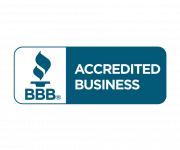
It’s no secret that social media is a powerful tool for businesses. It’s a great way to connect with customers, build relationships, and promote your brand. But if you’re not using social media strategically, you’re missing out on many potential benefits. In this post, we’ll walk you through creating a social media strategy for your business for 2022. We’ll cover everything from setting goals to creating content to measuring success. By the end of this article, you’ll have an idea of what you need to create a social media strategy to help your business succeed in the next decade.
How to Create a Social Media Strategy in 9 Easy Steps
What is social media marketing?
Social media marketing is a form of marketing that involves using social media platforms to reach audiences. It’s where you reach out to people and tell them about your brand. It’s also an excellent place to advertise your business.
Social media marketing is a great way to share your brand, and it’s a great way to get the word out about your business. It’s also a great way to keep in touch with your customers. Creating an effective social media strategy is like creating any other marketing strategy. You need to know your audience, what they want, and what platforms help you reach them. You need to identify what you want to achieve and what problems you want to solve. You need to understand your company and how it fits in the social media world. You should also know how to measure your results. You can’t just post and sit back and expect business to come in. When you post, you need to know what you want to achieve.

With over 2.8 billion monthly active users, anyone serious about marketing a business on social media needs to pay special attention to how they use Facebook.
What is a social media strategy?
A social media strategy summarizes everything you plan to do and hope to achieve on social media. It guides your actions and lets you know whether you’re succeeding or failing.
A social media strategy helps you:
- Set concrete goals and benchmarks
- Choose which social media platforms to use
- Decide which channels are most effective
- Create content and schedule
- Measure your success
- Use analytics to improve
- Identify your audience
1. Select Relevant and Realistic Social Media Marketing Goals
Social media marketing is a highly effective, scalable and affordable way to market your business; it’s a great way to reach the right people at the right time. Sites like Facebook are used to keep in touch with friends, stay connected with family, promote your business, and learn more about the latest trends. In addition, social networks are very effective tools to generate more website traffic.
Developing a strategy that works for your business will take time. It’s essential to understand your audience, how they are using social media, the competition in your niche, and your budget.
The best social media marketing strategies are measurable ones. It helps you to know which channels are working and which aren’t. You can also measure how much money you spend on each channel and how much money you bring in.
2. Determine Your Most Relevant Metrics

Your social media goals are what determine your metrics. For every goal, you need a related metric, which will help determine if your social strategy is hitting the mark or not.
Too many businesses create a social presence without seeing any measure of success. This, however, is especially true for businesses that want to measure the social presence, not as many marketers and businesses look to see more success. The good news is that, while there are no silver bullets when it comes to measuring ROI, there are ways to measure it in a business.
Don’t be fooled by easy-to-measure vanity metrics such as the number of Twitter followers someone has. Social media analytics is like looking at the rear mirror of a car. You don’t get an accurate picture of what’s going on back there by looking only at the rear-view mirror. You have to look through the windshield to see what’s happening with the real driver driving the car.
In this case, to understand the effectiveness and reach of your social media posts the best metric is to measure how the people consuming your content have responded to your posts and tweets.
Some marketers find it easier to measure the number of people who saw their campaign on Facebook. If people are engaging with your posts, then you know that is what motivates them to click. Other marketers might look at the number of people who clicked on any of your posts or advertisements. If your post was engaging with people, then you know it had a bigger impact. If people are not engaged, then you may want to have another strategy for selling your products.
3. Decide Who You Want as Your Social Media Audience
It would help if you decided who you want to reach out to and who you want to listen to. You don’t need to be everywhere – that is a waste of time and resources. In fact, research suggests that you should focus on around 60% of social networks, with the remaining 40% divided among niche networks and social bookmarking sites. You will also need to decide whether you want to look at social networks that are not owned by you. You might choose to create a Facebook page for your business, but only if you want to be able to see exactly how people interact with your business on that platform.
Remember, your social media marketing strategy should be tailored to your business. If your business is a local business, then you should focus on Facebook and Google.
4. Understand Your Social Media Audience
Social media audiences vary in their characteristics and how they use different types of social media networks. If you go to the same media channels as the audience you want to reach, then you will reach your goals.
For your goal of influencer marketing, you need to decide which networks are the most appropriate channels for your target market.
You may be an aging executive who uses Twitter; however, if you are not your business’s target market, you can also automatically assume that your customers are going to spend their time in other places.
Your social media marketing goals can be used to determine the best social channels to work on.
Check out our blog: What Social Media Marketing channels are right for your business?
5. Select the Right Social Media Networks for Your Audience

People worry about how they are going to find time and energy so that they can keep their various social networks updated. It is important that you find the networks where your intended audience spends their time. Your audience may be easier to identify than you think.
Often, you can find the people who frequent particular social networks simply by knowing the people who communicate with them. For example, you may ask your audience where they prefer to communicate with their customers.
On an online network, your initial goal is to develop a community around a specific, targeted group of people. It could be the fans of a given athlete, musician, etc. If you have a strong brand of your own, you might focus on an industry within that brand.
Pew Research has collected information on the use of different social media tools by specific audience groups. It details data such as who is most likely to use specific apps and networks, as well as what types of users these are.
7. Establish a Realistic Social Media Budget
Now you have established that you have a social media account for your business, you should be able to work out a social media budget. A reasonable budget is one where you can spend at least ten times what you plan to spend. If you can afford more, do so. The more time and effort you put into social media, the more you will see benefits.
A modest social media budget could suffice if you are running a very small business. You will probably need to invest in some content creation software to automate your social posts. If you are a larger business, you could spend $500 per month or more. The important thing is that you are spending money on something that can deliver results.
As with any form of marketing, you should calculate a return on investment (ROI) from your social media expenditure, bearing in mind the goals you set earlier in your strategy.
As you go about setting a social media budget, you should consider how much you intend to spend on all your digital marketing across all channels. Then ask yourself how much of that budget you are prepared to devote to social media.
Most companies spend about 5% to 15% of their annual revenue on marketing. Of that, most spend 35% to 45% on digital marketing activities. In turn, most companies spend 15% to 25% of their digital marketing budget on social media marketing efforts (organic and paid).
8. Plan the Types of Content You Intend to Share

The content you post on social media has the power to turn your brand into a household name and turn your followers into fans. This kind of impact only comes from having a solid social media content strategy. It’s not enough to show up on every platform and sporadically update your audience when you have the time. The way to stand out on social media is to identify specific goals, create valuable posts that align with those goals, and distribute content on the right platforms. Then you can measure your results and fine-tune your strategy over time.
There isn’t one cookie-cutter social media strategy that will guarantee success. Your strategy will differ depending on your industry and audience. There are, however, specific steps you should follow to build out a plan that has longevity and helps your brand and business grow.
9. Set Up Your Accounts Properly Before You Make and Promote Content
It is essential that you make sure that you take the time to design your profiles correctly. You will want a consistent visual look across all of your social networks. Use the proper colours, logos, and graphic design on each network. Don’t waste any of your social real estates as it can be useful and valuable. The time you put into developing relevant content is definitely worth it and could mean the difference between success and failure. So make time for setting up your social accounts and take the time to complete your profiles fully.
Make sure that you link to all the relevant and useful information on your website with specific landing pages for those who come across your content from your social accounts.
Consider your audience when creating each of your Facebook account pages. Make sure the persona of your account best represents the message and interest you want to convey.
In Conclusion
As you look to expand your business through social media, you need to make sure you understand how to go about it. You need to build your knowledge base and be sure that you know how to get the very most out of your social media efforts.
The most effective social media platforms for businesses are the ones that have the highest engagement rates. In turn, these are the social networks that attract the most attention.
You need to have a realistic social media budget, so make sure you understand the type of content you are going to share.
Don’t have time to manage your social media? Social Know How can help you take the load off with our social media management services. We offer social content and posting strategy, page monitoring, Facebook and Instagram campaign management, and monthly reporting. Contact us today for more information.





